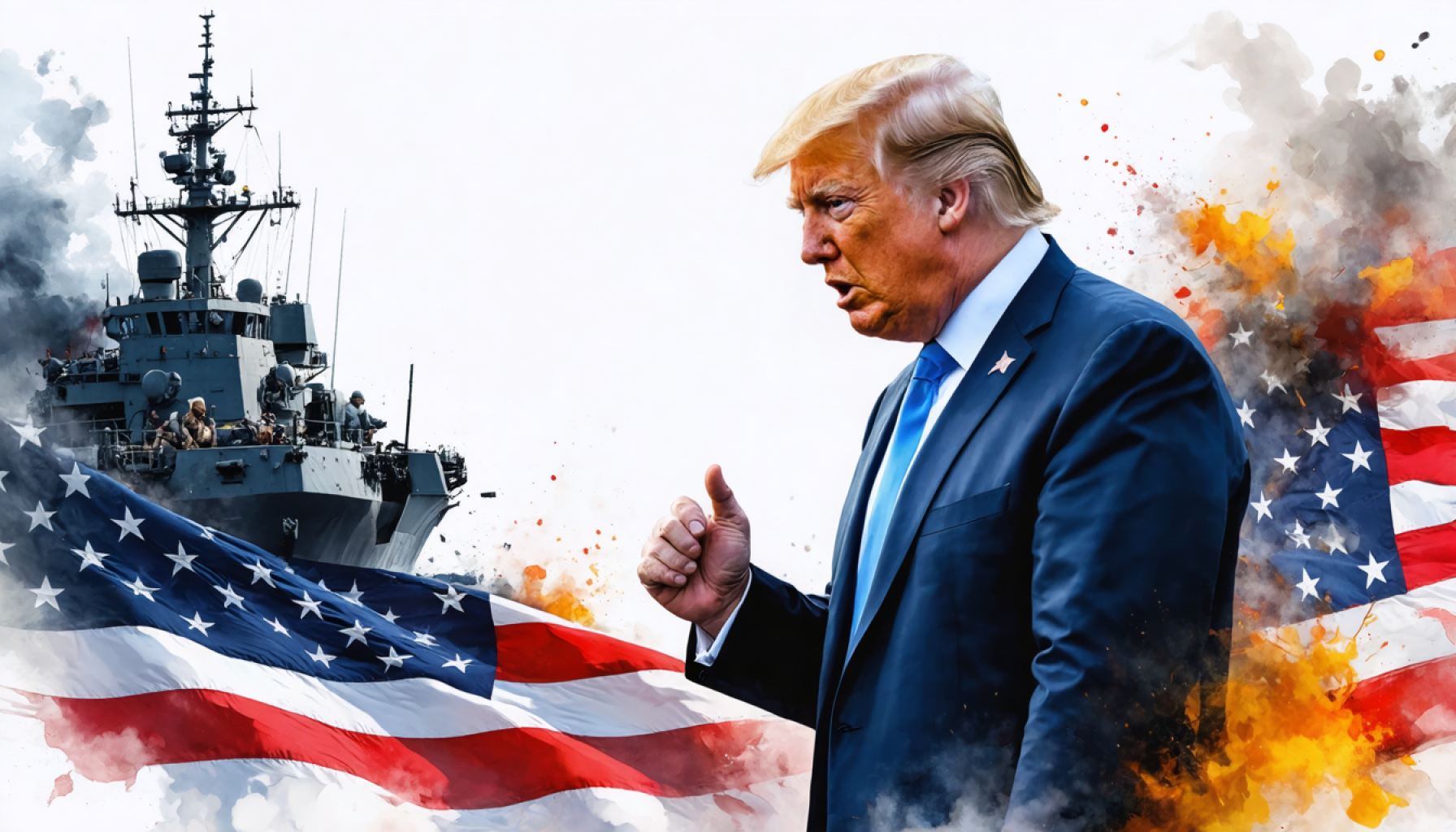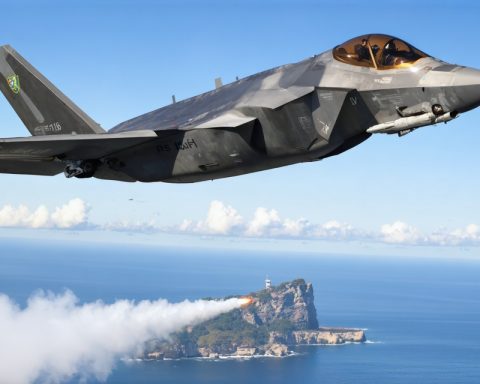- President Trump’s tariffs aim to reshape global trade but risk negatively impacting the U.S. defense sector, as they impose a 10% duty on most international partners, excluding Russia and Belarus.
- Key U.S. defense projects like the F-35 fighter and nuclear submarines are vulnerable due to their reliance on intricate global supply chains, which the tariffs disrupt.
- The tariffs risk unraveling strategic partnerships and could lead to increased costs for defense projects, ultimately burdening the Defense Department and taxpayers.
- Allies, particularly in Europe, are prompted to enhance their defense capabilities and reduce reliance on U.S. components, leading to a potential shift in global defense partnerships.
- For states heavily invested in defense contracts, such as Arizona, the economic impact of disrupted supply chains could be significant.
- The intertwining of economic and security concerns stresses the importance of balancing trade goals with maintaining uninterrupted defense capabilities.
In a dramatic move, President Donald Trump has unleashed a torrent of tariffs aimed at reshaping global trade dynamics. However, this ambitious plan might backfire, hitting at the very heart of America’s military prowess. With a sweeping 10% duty slapped on all international partners—bar a few notable exceptions like Russia and Belarus—the ripple effects could impact projects crucial to national security.
The potential fallout could be substantial, particularly for the U.S. defense sector, which relies heavily on an intricate web of global suppliers. Among the most vulnerable are flagship projects such as the F-35 fighter jet, cutting-edge air defense systems, and next-generation nuclear submarines. These projects epitomize the complex international cooperation that underpins modern defense manufacturing. The integrated supply chains span continents and are finely balanced, making them sensitive to economic shocks.
The administration’s failure to exempt defense-related materials from these tariffs threatens to unravel decades of strategic partnerships and innovation. This could lead to increased costs—a burden that the Defense Department and by extension, American taxpayers, may end up bearing. The short-term surge in prices for raw materials and components, alongside retaliatory trade measures, complicates the production timeline and financial forecasts for defense contractors reliant on both cost-effective and timely deliveries.
This move raises eyebrows among allies, particularly in Europe, where reliance on U.S. components is substantial. As a result, there is a burgeoning impetus in Europe to ramp up their defense capabilities, aiming for greater self-reliance and reduced dependency on American-made parts. This shift could alter global defense partnerships, fostering a more fragmented landscape.
For states like Arizona, where defense contracts are a significant economic driver, the repercussions could be politically charged. With the state’s recent $14.5 billion stake in defense dealings, any disruption in the supply chain could have wide-reaching economic impacts and potential job losses. Senator Mark Kelly underscores this complexity, pointing out that rising costs due to tariffs could stretch the defense budget, forcing difficult choices regarding military capabilities.
Despite these challenges, some officials remain cautiously optimistic. Ukraine, for instance, anticipates weathering the tariffs, with a smaller 10% levy on their exports compared to harsher measures facing larger economies like the EU. Yet, for a country embroiled in conflict, any economic instability can have profound implications.
As America navigates these turbulent waters, the key takeaway is clear: the quest for trade leverage must be balanced with the imperative to maintain robust, uninterrupted defense capabilities. The intertwining of economics and security is more apparent than ever, posing critical questions for policymakers aiming to safeguard national and global stability.
In an era where alliances and defense contracts are intertwined with geopolitical stability, the stakes have never been higher. As these tariffs echo across supply chains and alliance halls around the world, the question looms—can the Trump administration temper its economic ambitions to maintain the crucial equilibrium needed for a secure future?
The Hidden Costs of Trump’s Tariff Strategy: Unveiling the Impact on U.S. Military Dominance
Introduction
President Donald Trump’s introduction of sweeping tariffs, targeting nearly all international partners except Russia and Belarus, has sent shockwaves through global trade dynamics. While intended to boost American industry, this move could inadvertently undermine the U.S. defense sector by driving up costs and destabilizing key supply chains. Let’s delve into the broader implications of this strategy and explore what it means for the defense industry and global military alliances.
Market and Industry Trends
1. Tariff Impact on Defense Industry: The imposition of a 10% tariff impacts large-scale defense projects like the F-35 fighter jet, advanced air defense systems, and nuclear submarines. These projects rely on complex global supply chains that tariffs can disrupt, leading to increased costs and project delays. For instance, according to the Congressional Research Service, the F-35 program sources components from nine international partners, making it particularly vulnerable.
2. Shift in Global Defense Partnerships: There is an increasing trend for countries, particularly in Europe, to reduce reliance on U.S.-made defense parts. This push towards self-reliance could fragment traditional defense alliances and potentially weaken NATO’s cooperative defense strategies. Markets like Germany and France are ramping up their domestic defense production capabilities, potentially shifting the global defense industry landscape.
3. Implications for U.S. States and Economy: States like Arizona, deeply integrated into defense manufacturing, could face significant economic repercussions. With substantial defense contracts at stake, the economic stability of local communities and job markets is under threat.
Pressing Questions and Insights
How will increased defense costs affect the Pentagon’s budget?
Rising costs due to tariffs could force the Department of Defense to re-evaluate its budget allocations, potentially stretching resources thin and impacting military readiness. This may result in strategic cuts or delays in certain programs to manage financial constraints effectively.
What are the long-term economic implications for U.S. allies?
European allies might expedite efforts to develop indigenous defense technologies, reducing their dependency on American imports. This strategic shift could result in a more balanced distribution of global military power but also complicates collaborative defense initiatives.
Pros & Cons Overview
Pros:
– Potential short-term boost to U.S. domestic industries seeking protection against foreign competition.
Cons:
– Increased costs for defense projects could strain the Pentagon’s budget.
– Potential job losses and economic disruption in states reliant on defense contracts.
– Fragmentation of global defense alliances could weaken collective security frameworks.
Security & Sustainability
Tariffs might foster self-reliance but could inadvertently hamper the sustainability of international defense collaborations by straining long-standing partnerships and altering the global defense ecosystem. Policymakers need to prioritize strategic exemptions for defense-related materials to maintain a balanced approach that ensures national security.
Actionable Recommendations
1. Strategic Tariff Exemptions: Consider exemptions for critical defense-related materials to preserve cost-effective and timely delivery of essential components.
2. Diversified Supply Chains: Encourage a diversified supplier base to mitigate risks associated with tariffs and geopolitical tensions.
3. Enhanced Global Cooperation: Strengthen defense partnerships by engaging in dialogue with international allies to address shared concerns and maintain robust alliances.
4. Invest in R&D: U.S. defense contractors should invest in technological innovations to reduce reliance on global supply chains and enhance domestic capabilities.
Conclusion
While Trump’s tariff strategy aims to bolster American industry, a careful balance must be struck to uphold the nation’s defense capabilities. The interconnected nature of global supply chains and alliances highlights the need for nuanced and thoughtful policy decisions. By addressing these challenges head-on, the U.S. can maintain its strategic military edge while fostering stable economic relations worldwide.
For more information on trade policies and their impact, visit the World Trade Organization.










